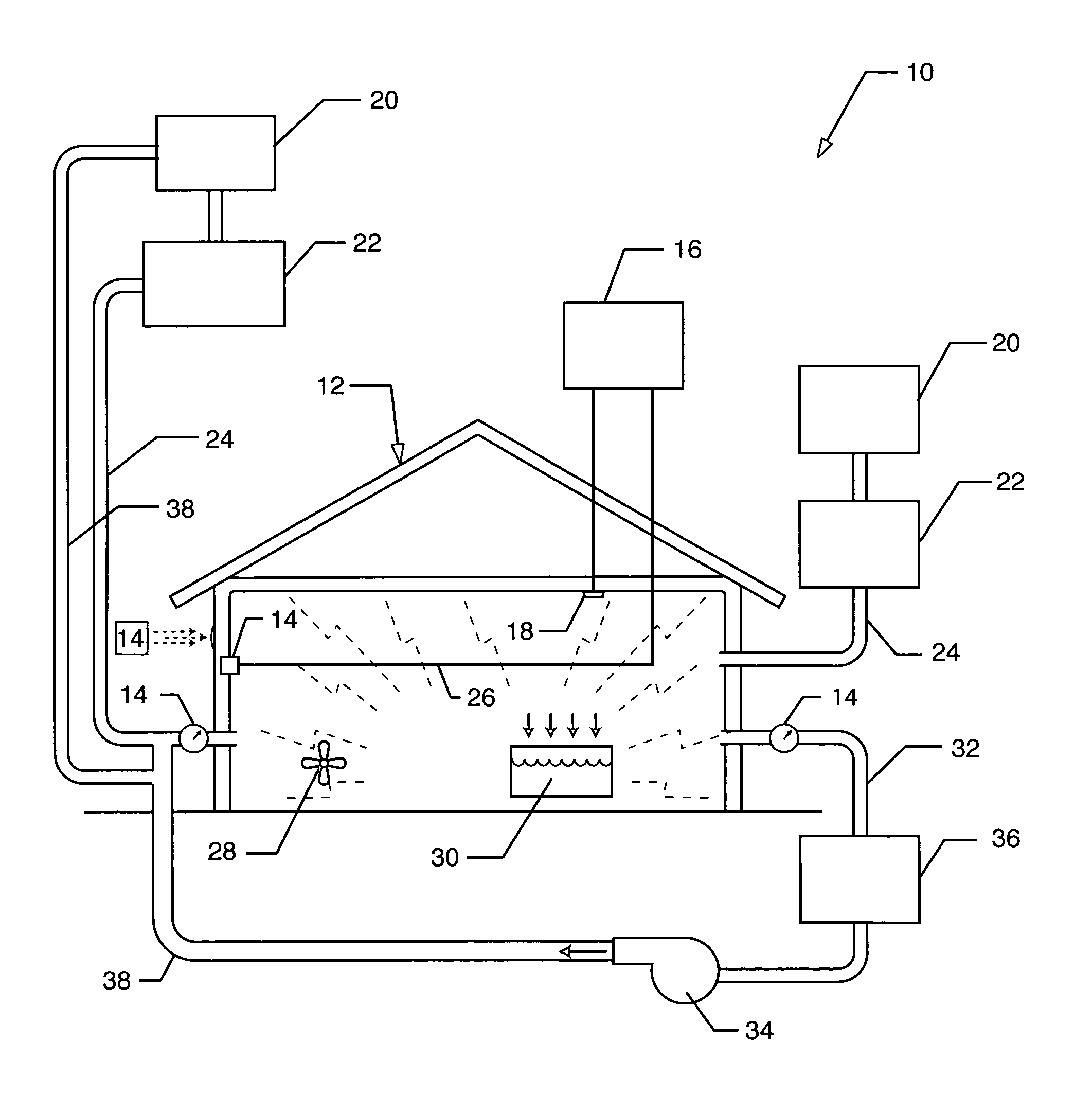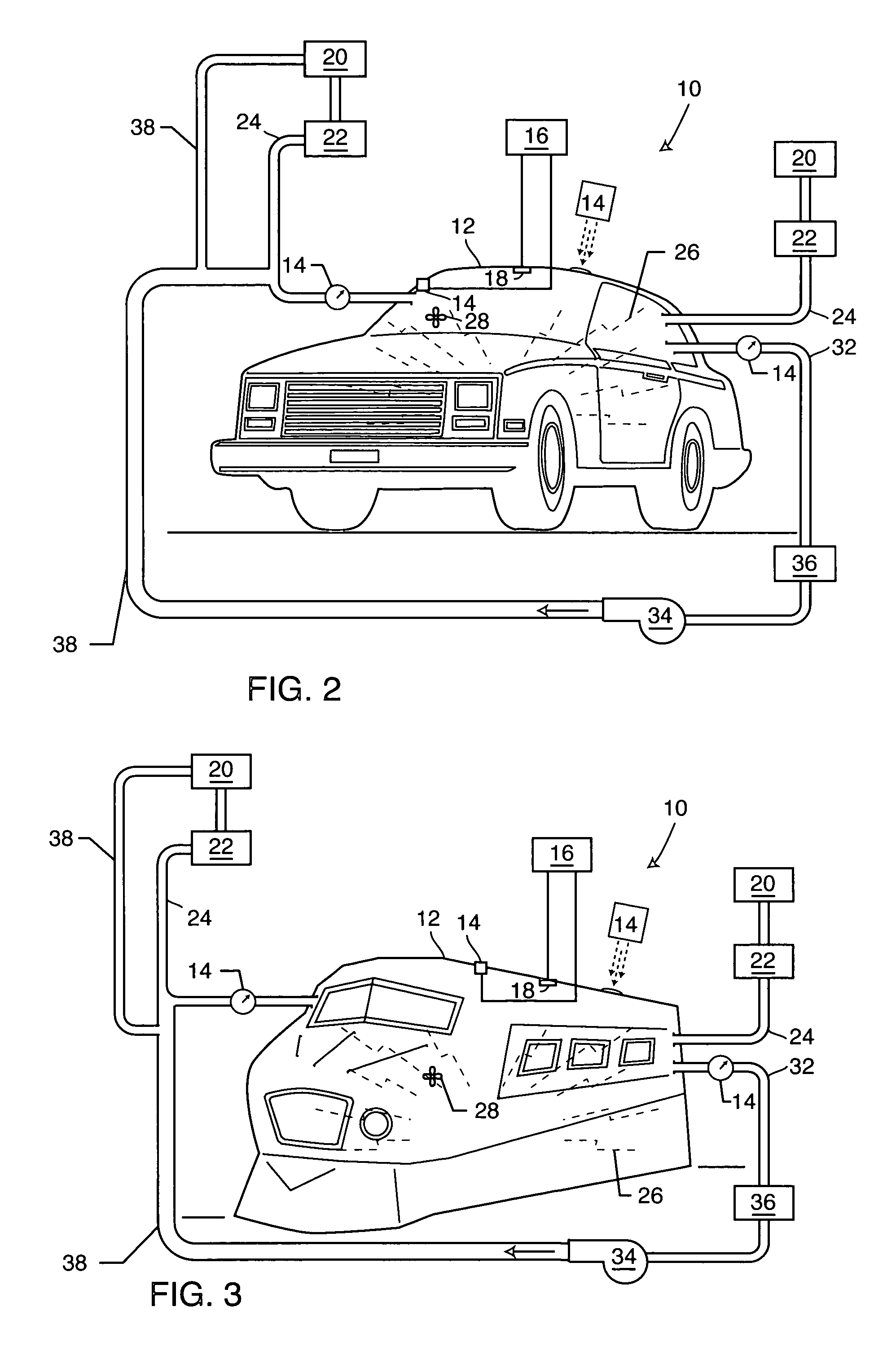System and process for removing or treating harmful biological and organic substances within structures and enclosures
a biological and organic substance and system technology, applied in the direction of measuring apparatus housings, drying chambers/containers, combination processes, etc., can solve the problems of affecting the effect of the structure, and the methods disclosed in forbes and hedman et al. patents are quite complex in the preparation of the building, so as to achieve the effect of reducing volatile organic compounds, reducing the number of dead organisms, and reducing the number of volatile organi
- Summary
- Abstract
- Description
- Claims
- Application Information
AI Technical Summary
Benefits of technology
Problems solved by technology
Method used
Image
Examples
Embodiment Construction
[0028]As shown in the accompanying drawings for purposes of illustration, the present invention is related to a system and method for removing harmful organic substances, such as VOCs, dust mites and their allergens, bacteria, and insects, from an enclosure.
[0029]Referring to FIGS. 1-4, there is seen a schematic diagram showing the components of the system of the present invention, referred to generally by the reference number 10, in use treating an enclosed structure 12. The enclosed structure 12 is typically a commercial or residential building, but can also be a vehicle, such as an airplane, bus, boat, automobile, etc., as shown in FIGS. 2-4. The system of the present invention can also be used in treating objects such as the materials which are used in the construction of such structures and vehicles.
[0030]A temperature sensor 14 may be positioned within the structure to monitor the temperature of the structure 12. If the temperature sensor 14 is disposed within the structure 12...
PUM
| Property | Measurement | Unit |
|---|---|---|
| Temperature | aaaaa | aaaaa |
| Temperature | aaaaa | aaaaa |
| Pressure | aaaaa | aaaaa |
Abstract
Description
Claims
Application Information
 Login to View More
Login to View More - R&D
- Intellectual Property
- Life Sciences
- Materials
- Tech Scout
- Unparalleled Data Quality
- Higher Quality Content
- 60% Fewer Hallucinations
Browse by: Latest US Patents, China's latest patents, Technical Efficacy Thesaurus, Application Domain, Technology Topic, Popular Technical Reports.
© 2025 PatSnap. All rights reserved.Legal|Privacy policy|Modern Slavery Act Transparency Statement|Sitemap|About US| Contact US: help@patsnap.com



